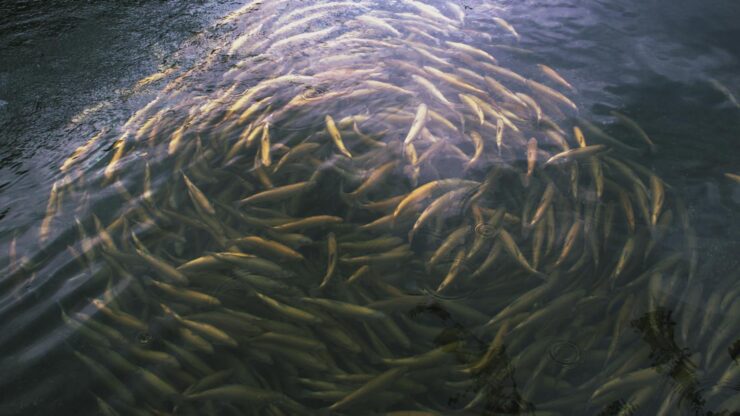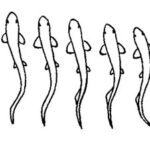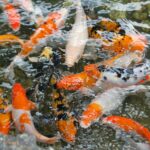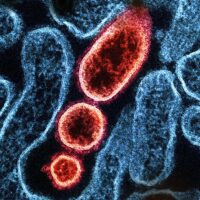Polyculture in agriculture is best defined as the practice of planting several kinds of crop species on the same piece of land at the same time. Choosing to adopt polyculture tries to imitate the diversity found in natural ecosystems. Another name for polyculture is intercropping, and this is the opposite of monoculture whereby only one species of crop and even animals are kept together.
Types of Polyculture Farming Methods
1. Multiple Cropping (Double-Cropping)
Multiple cropping involves the growth of crops on the same piece of land through a single growing season. Immediately after the crops are harvested, you need to plant the next crops as fast as possible or immediately if possible. The newly grown crops continue after the harvests are done at the end of the growing season. Main crops that are grown in multiple-cropping systems are arable crops, fiber, and vegetables. Small or ordinary farmers tend to use it since they can efficiently use fertilizer, water, and land.
2. Relay Cropping (Modified Double-Cropping)
Relay cropping is an altered version of double cropping where crops are grown before the harvest of initial crops. In other words, all of the crops will have to share a section of the growing season, helping to utilize the solar radiation and heat available for all of the crops. Currently, relay cropping is gaining momentum as several farmers across the world specialize in planting corn for seed, winter wheat crops, and soybeans.
3. Intercropping
Intercropping involves the growth of several crops whereby two or more different crops will cover the same piece of land simultaneously. Here, you first grow the main crop, then proceed by growing the second crop in the spaces left. Usually, farmers who use this method use a minimum of two different crops at the same time. Another name for intercropping is agroforestry because smaller crops are always grown below those that grow higher. This method is suitable in places that have a low amount of land available for farming. Crops are grown in an organized style or mixed randomly. The most suitable crop species for this method are legumes because they fix atmospheric nitrogen into the soil, helping to lower the use of fertilizer.
4. Cover Cropping
Cover crops are grown to cover the soil with the main aim of conserving the soil’s surface from being carried away by wind and water erosion while preventing weeds from growing in the field. Their top growth helps in covering the soil surface and their roots hold and stabilize the soil particles. Cover crops are also widely used to generate green manure. At the end of their growth, you may choose to till them into the soil to provide nutrients back to the soil as they also improve your soil’s characteristics such as aeration and water retention.
5. Crop Rotation
In crop rotation, you plant a different kind of crop each time at certain intervals on the same field. It is important not to grow a similar type of crop on the land for two consecutive years. Waiting allows the soil to regenerate between growing a similar crop and provides better conditions for both the crop and the soil.
Benefits of Polyculture Farming
1. Pest and Disease Management
Polyculture is perceived to be capable of minimizing pests, crop diseases, and weeds while also limiting the use of pesticides across the farm. Research shows that plants belonging to different species when growing closer to another fight diseases more easily compared to those in monoculture.
2. Improved Soil Fertility
Non-legumes together with intercrops of legumes have higher chances of producing well on low-nitrogen soils through biological nitrogen fixation. Polycultures improve soil health over time, unlike monocultures that deplete soil health.
3. Resource Efficiency
A farmer may have a smaller section of land with similar output of crops and also possess a more efficient irrigation system compared to monoculture systems that require large sections of field to separate crops and complicated irrigation systems.
4. Enhanced Plant Growth
When the soil is used for several crops, crops grow stronger through beneficial competition. The roots of crops and vegetables grow thicker with the aim of covering as much soil as they can, resulting in healthier plants that offer better yields. As crops grow closer to one another, their immune systems increase.
5. Risk Reduction
Polyculture lowers risks and provides stable and high-quality produce compared to monoculture systems.
Disadvantages of Polyculture Farming
1. Management Complexity
The main drawback of polyculture is the number of control challenges one has over the crops. Farmers must work in more compact spaces with several kinds of crops growing together. A farmer may know only how to handle one kind of species and doesn’t have enough knowledge to manage the others.
2. Resource Competition
Polycultures can lower crop yields through competition among mixed species for resources such as water, nutrients, and light.
3. Infrastructure Requirements
Some polyculture systems need investment in equipment to help control the land. The farmer will have to dedicate more time and invest in infrastructure to make it work. The plot of land should be large enough, have a proper irrigation system, and physical and chemical products to help support growth.
4. Harvest Complications
Different species possess conflicting growth rates, harvest needs, and days to maturity, making farm management more complex.
5. Mechanization Challenges
Monocultures are more amenable to mechanization compared to polyculture systems.
Monoculture vs Polyculture Comparison
Key Differences
– Chemical Inputs: Monocultures consume high quantities of synthetic chemicals for handling pests and providing nutrients to crops, while polyculture helps eliminate many of these synthetic inputs
– Soil Health: Monoculture depletes soil health over time, while polycultures improve soil health
– Environmental Impact: Monocultures have severe impacts on the environment and soil health, while polycultures are more environmentally sustainable
– Management: Polycultures create a more manageable gardening system in the long term
Similarities
The only existing major similarity between these two methods is that both involve planting vegetation and use fungicides, fertilizers, and pesticides, though monoculture consumes larger quantities compared to polyculture.
Historical Context and Future Considerations
Polycultures were used commonly across the globe up to 70 years ago. From then, monocultures began spreading across the United States, Europe, and Canada. While monocultures enable farmers to increase their harvests, they also have severe impacts on the environment and the general health of soils.
When shifting to organic farming while increasing farm biodiversity, moving towards a polyculture system is one of the best decisions to make. You can use polycultures in crop rotation or as green manure to improve your soil’s general fertility and nutrient level.
REFERENCES
- Fish and Fisheries – B. N. Yadav
- A Textbook of Fish Biology and Fisheries – S. S. Khanna & H. R. Singh
- Introduction to Fishery Science – B. K. Tiwari & S. C. Pathak


















